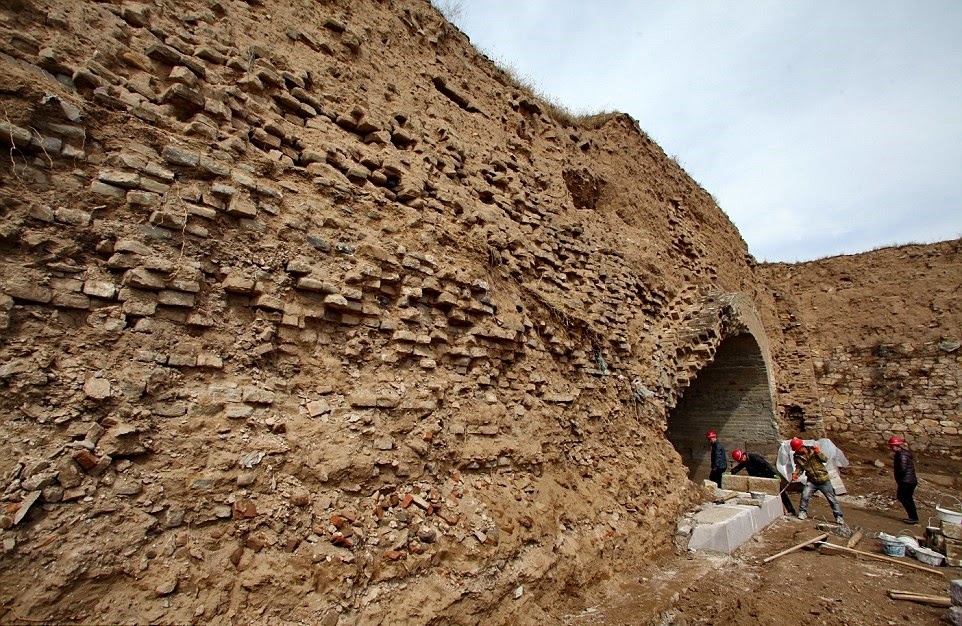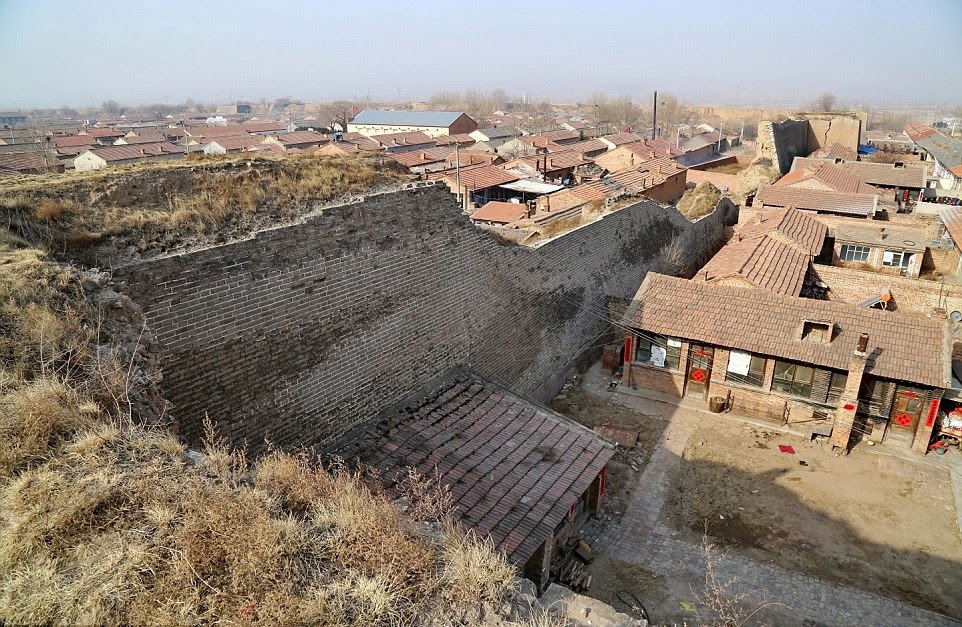
attacks by the invading Mongolian armies
[Credit: Xinhua/Yang Shiyao]
So much so that battle plans would be drawn up to specifically give the castle at Zhangjiakou, in China's northern Hebei province, a wide berth.

and was protected by an imposing 12-metre wall
[Credit: Xinhua/Yang Shiyao]
Now archaeologists have begun a daunting project to restore the once-mighty site to something approaching it previous glory, in particular the dilapidated outer wall that repelled every attack which invading Mongolian armies could throw at it.

the restoration of the fortress' dilapidated outer wall
[Credit: Xinhua/Yang Shiyao]
The restoration of the fortress - which was given the coveted title of 'Wucheng' or 'Martial City' after its construction in 1393 - will see building work completed in the original Ming Dynasty style of architecture, Cinese sources report.

which was known as the Ming Dynasty's 'Martial City'
[Credit: Xinhua/Yang Shiyao]
The project will see the restoration of the Ming and Qing era commercial districts, the Great Wall Martial Museum, the Golden Harvest Academy and performance theatres as well as the opening of the Red Tourist Route, with all work planned to be complete in 2016. The restoration work will also include the ongoing protection of surviving structures.

dilapidated and will be the focus of much of the work
[Credit: Xinhua/Yang Shiyao]
The castle in Wanquan county - known in China as a 'living fossil of the Ming military system' - was built in 1393 but is relatively well-preserved, especially the interior city area which includes the residences of generals and wealthy merchants.

possible be carried out in the style of Ming Dynasty architecture
[Credit: Xinhua/Yang Shiyao]
The fortress has huge historical, cultural and military significance and has key cultural relic status in China.
Author: Edward Chow | Source: Daily Mail Online [April 07, 2015]